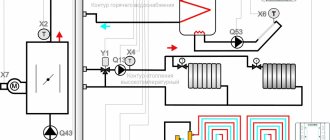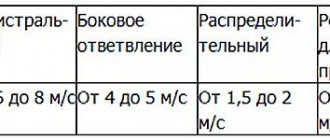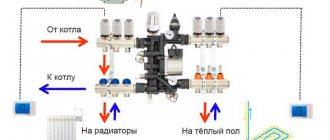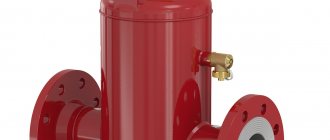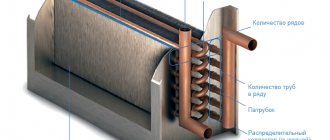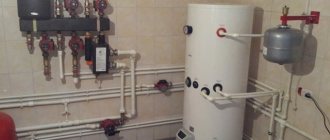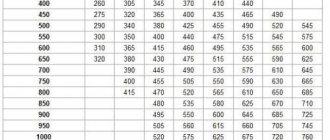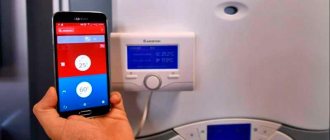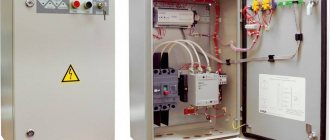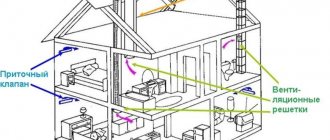What is automation for ventilation systems
Today, automatic ventilation control systems are represented by a large complex of various technical devices. All of them, from thermostats to complex computerized modules, are designed to facilitate the management and control of the operation of forced ventilation systems. The variety of equipment makes it possible to solve automation problems at any facility, regardless of its characteristics and purpose.
Based on operational and technical requirements, different approaches to the manufacture of automated ventilation control panels are possible:
- At some facilities, you can get by with standard modules produced in the form of cabinets with control devices installed in them.
- In other cases, installers have to manually assemble complexes adapted for complex supply and exhaust ventilation systems, taking into account specific tasks.
The difference in approaches is due to the need to ensure effective ventilation and create comfortable conditions for residents or workers in the interior of the building, regardless of the time of year and external weather conditions.
Important! In large shopping and entertainment complexes, in educational and administrative buildings, in large industries, the installation of equipment for automation of ventilation systems allows you to eliminate possible operational failures and minimize the influence of the human factor.
The operation of ventilation mechanisms is controlled using a set of sensors installed indoors. Some of them operate on the principle of a thermostat - as the temperature inside the building rises, fans automatically turn on, thereby ensuring a flow of fresh air.
We recommend that you read: Recirculating kitchen hood without duct
Modern automated systems are equipped with elements of artificial intelligence and more complex instrumentation.
Structurally, similar modules consist of three groups of nodes:
- Sensors are devices that transmit information about the environment - thermostats, air humidity meters, gas analyzers. They transmit the collected data to the analyzing center.
- The control center collects and processes information coming from control sensors and, based on the analysis obtained, issues commands to control mechanisms to change the operating mode.
- Actuators are units that perform mechanical actions. This group includes: fan speed converter, servo drives for adjusting the position of valves, etc.
Control centers analyze the ratio of oxygen and carbon dioxide in the air, the percentage of humidity, and, if necessary, issue a command to ventilate the room. When a fire is detected, highly intelligent electronics independently block the flow of fresh air, preventing the spread of fire.
In normal mode, automation ensures the smooth functioning of all components and mechanisms of ventilation systems without the involvement of an operator.
Computerized modules transmit information about the operating mode and sensor readings to a single control panel. This allows the operator, if necessary, to adjust the operation of the automation and change settings remotely.
Note! Thanks to the use of automation, a much smaller number of technical specialists can control the operation and maintain ventilation with installed automation.
Depending on the specific situation, one of 3 device control modes is used:
- Manual. Ventilation control is carried out by an operator located directly in the control room or at a remote control panel.
- Autonomous. The equipment operates in accordance with the established settings, regardless of other engineering systems installed in the building.
- Auto. Control devices are integrated into the overall control of all engineering complexes of the building. The ventilation operation is synchronized with other devices and sensors located in the house - for example, with a fire alarm and other emergency sensors.
Thus, the automated complex plays the role of a control center. It starts the ventilation, stops it, processes sensor readings and sets the desired mode depending on temperature, humidity and other parameters.
Purpose of the ventilation control panel
If it is necessary to turn on or configure a household split system or supply ventilation devices fixed in the ventilation duct opening, then no control units are required - each device is adjusted manually or from the remote control.
But if the length of the networks is large, and the devices are installed in inaccessible places: in shafts, on the roof or attic, in specially designed niches inside the walls, then it becomes necessary to install a remote control unit.
All information about the operation of air heaters, convectors, and individual fans goes to a single center - SHCHUV. Automatic machines responsible for the operation and adjustment of devices are also located here.
Modern control panels are panels with indicator control devices or metal cabinets that are installed on the floor or suspended from the wall. To protect the internal contents, there are hinged doors that can be locked. In addition to the abbreviation SHUV, you can also find SHUV (cabinet).
Main functions of the SHCHUV:
- control over equipment included in ventilation and air conditioning systems;
- protection of units from overheating, incorrect installation and connection, short circuit;
- adjustment of the most important equipment parameters, such as productivity or power;
- programming the operation of the entire system or individual units for a given time period - day, week, month;
- providing an indication that facilitates monitoring and adjustment;
- maintaining a certain temperature in various rooms, the ability to quickly change its parameters;
- control over the internal walls of air ducts and the degree of filter contamination;
- preventing failures in the operation of seasonally dependent equipment, for example, water heaters, which can freeze at too low temperatures.
Installing an electrical panel at an enterprise or in a residential building allows maintenance personnel to monitor the operation of equipment from one place and quickly respond to breakdowns and shutdowns of individual devices. Devices that control fire extinguishing and partial heating devices can also be located in the same cabinet.
SHUPVV installation diagram. Cabinets can be common, combining all the devices in the building, and serving a separate floor, wing, workshop, section, etc.
If an emergency occurs, for example, a fire in one of the rooms, the ventilation equipment is stopped automatically or manually - from the control panel.
Purpose of ventilation control cabinets
Today, the ventilation control cabinet is an integral part of the air exchange system. It greatly facilitates the operation of equipment to provide fresh air to the room or utilize exhaust gases.
When purchasing a SHUV distribution unit, you should be guided by the control functions for specific ventilation, according to its operating conditions.
For a ventilation system that provides smoke removal from premises, a SHUV is required, which will provide increased safety and control the air temperature in the room and its humidity. And also maintain the required parameters at normal levels and move air masses at a certain constant speed.
The purpose of the ventilation control cabinet depends on the type of air exchange system:
- With recovery or purification of harmful air substances in the work area.
- With electric heater.
- With water heater.
- With smoke function.
- Exhaust, supply or supply - exhaust ventilation (SHU PVV).
All ventilation control cabinets operate in two modes:
- Summer mode. Indicates that air temperature control is disabled. When the supply air temperature drops, the automation switches on the protection mode according to the parameters entered in advance. Temperature control is carried out using sensors.
- Standby mode.
To control one fan, it is possible to use the SHUV1 smoke removal cabinet. To control several fans, a cabinet of the ShSAU-VK type is suitable. The price directly depends on the number of controlled fans.
The main tasks of automation for ventilation
Since the modern market offers a large number of various technical devices for ventilation automation, the range of their functions is also extremely wide.
Main functions of the control module equipped with elements of electronic intelligence:
- Maintaining the specified parameters of the microclimate of the interior - air temperature and humidity, carbon dioxide saturation, etc.
- Possibility for the operator to remotely control the fans, turn them on and off remotely.
- Implementation of automated control over the sensors of all components and assemblies of ventilation equipment.
- Independent transfer of equipment to summer or winter mode.
- Monitoring the level of contamination of filter devices with the function of signaling the need for cleaning.
- Opening and closing air duct dampers, adjusting the performance of supply and exhaust fans.
- Cutting off the fresh air supply when the fire alarm is activated.
- Turning off the power supply in emergency situations - sudden surges or drops in voltage. This allows you to prevent failure of devices, sensors and individual components of the ventilation system.
Note! The exact list of functions that a particular automated module is equipped with should be obtained from the seller or manufacturer.
Additional functions
Modern manufacturers, in order to fully satisfy customer requests, pay special attention not only to the reliability of the equipment they produce. An important factor in the competition for consumers is equipping products with as much additional functionality as possible.
Today, highly intelligent functions such as:
- Connecting ventilation to a single electronic “smart home” control controller.
- Manage settings via Internet applications, using Wi-Fi and Bluetooth.
Equipped with modern functionality, automatic equipment becomes clear and easy to operate, like other household appliances.
CO2 sensor for CO2 system TURKOV
Staying in a room with a high CO2 content leads to negative consequences, which is why it is so important to pay attention to room ventilation. A convenient and effective method of regulating air exchange is to use a CO2 sensor from TURKOV.
As we can see, the most harmful is long-term stay in rooms with a high CO2 content, which is why special attention should be paid to home ventilation and ventilation of workplaces. At the same time, the most correct and energy-efficient method of regulating air exchange is regulation using a CO sensor.
The CO2 detector monitors the CO2 level in the room as accurately as possible (+/- 25 PRM) automatically, without requiring additional adjustments and settings.
How it works?
Using the CO2 sensor, which is installed in the exhaust duct, the automation recognizes the CO2 level in the room and automatically maintains its optimal level by increasing or decreasing the fan speed. The supply and exhaust fans operate synchronously. Fan control range from 0 to 100%.
CO2 sensor
Features of the SHCHUV device
Installation and configuration of control panels is carried out according to the rules and regulations dictated by government documents, such as GOST R 51321.1. Cabinets for pumps and electrics, panels for ventilation and air conditioning systems are mounted in corridors, utility rooms or in specially designated rooms - switchboards.
If the building has the capabilities, then all control units, including ventilation and fire protection, are installed in control rooms.
In the room where the switchboard is located, room temperature and normal humidity levels must be maintained. All devices must be protected from direct UV rays and dust, as well as from magnetic vibrations and radio interference
Manufacturers of electrical equipment offer a variety of configurations that vary in size, functionality, degree of protection and level of programming. The simplest modifications are intended for servicing private residential real estate, while complex modifications are intended for enterprises and public buildings.
Requirements for the configuration of control panels
When choosing a SHUV, they are guided by the size of the working area, the ability to install the necessary devices, ergonomics and safety. The last point applies both to the installers themselves, who regularly service the networks, and to people who may be nearby.
The main requirements for SHUV and SHUV are as follows:
- the panel must accommodate all control devices for the ventilation and air conditioning system;
- important components must be equipped with an indication, light, digital or connected to a PC;
- devices responsible for the most important equipment must have dual control - automatic and manual.
All devices are neatly placed on the same plane. The package should be as simple and easy to understand as possible. If the ventilation panel is assembled according to all the rules, then, if necessary, even a person ignorant of electricity will be able to turn off emergency devices.
Modern control units are manufactured taking into account the possibility of saving energy. Let’s assume that properly selected automatic devices can reduce costs by 50-65%
The content and functionality of the shields may vary. For example, some systems require a frequency converter, while others do without it. The most convenient for use are cabinets and panels with automation and remote controls.
Work Item Overview
Structurally, the SHUV is a rectangular plastic or metal case with the required protection class IP 45. If operating conditions are associated with an increased risk, then the protection class is higher.
Inside the case there are devices such as a power supply, controller, and converters. Several circuit breakers are responsible for individual devices: air heaters, recuperators, fans, cooling units, etc.
A mandatory element is a manual control panel. An alarm unit is also required, which is triggered in an emergency and produces warnings with light or sound signals.
Strips and terminal blocks for installing electrical devices and connecting them with wires look the same as analogues for electrical distribution boards
Control elements also include sensors. These are a kind of receptors that collect various information about the state of the system and its environment.
They measure the temperature of the air and the devices themselves, the degree of concentration of gases or contamination of system elements, measure the speed of air movement, etc. The data obtained is sent to automatic regulators, and the operation of the system elements is adjusted.
Based on their functions, sensors are divided into the following types:
- temperature;
- humidity;
- speed;
- pressure, etc.
Temperatures can be either digital or analogue. A signal about a sharp increase or decrease in indoor temperature may cause the system to switch to another mode.
Humidity sensors operate on the same principle. The movement of air masses inside ventilation ducts can be determined using speed and pressure sensors. Based on their installation location, sensors are divided into internal and external. The first ones take data indoors, the second ones, which are also called atmospheric or street data, take data from outside buildings.
Ventilation sensors can also be ducted, that is, installed inside air ducts: either on the walls or across the air flow. They are universal and can transmit a large amount of information: temperature, pressure, air speed
Some sensors are fixed on the surface of parts that need to be monitored. They take parameters of the devices themselves, for example, winding temperature, rotation speed, etc.
The installation of sensors requires careful selection. On the one hand, the more information, the more accurately the system operates, but on the other hand, the operation and maintenance of the network becomes costly in terms of energy consumption.
Controllers work in conjunction with sensors. These are the devices that receive information and process it automatically. They can be called intermediaries, since the signal is then transmitted to actuators: air flow switches, fans, refrigeration units, heaters.
Controllers with microprocessors are more suitable for installation inside SHUV. They are compact in size and do not require a large area for installation
Particularly popular are universal type controllers, which are capable of simultaneously processing information coming from various systems: ventilation, heating, etc.
Automation functions and capabilities
The automation of the ventilation system performs several important tasks. Let's get to know them.
- Thanks to automation, the entire system works properly and is always under control. Usually a special accident analyzer is installed. Modern developments make it possible to control automatic systems remotely - the operator only monitors the operation of the existing device, and can also make his own adjustments by setting certain modes.
- Using automatic equipment, it is possible to analyze individually and monitor the functioning of each existing mechanism. In addition, it is possible to monitor the overall activity of the ventilation circuit. The unit’s sensors provide certain data, the automatic system examines the position and makes its own adjustments to the operation of the equipment. If an accident occurs, a corresponding shutdown signal is sent to a special start button.
- Automation in ventilation systems is also designed to save valves and water heating circuits from the harmful effects of low temperature values. In addition, automatic equipment prevents the temperature from dropping to dangerous levels.
- The automatic control system allows you to regulate the ventilation in the room. Thanks to this addition, it is possible to switch various modes. Thus, in conditions of sudden changes in loads and temperatures, automation can reduce the rotation speed of existing fans, as well as deactivate the equipment completely.
- If there is such a nuisance as a short circuit or other similar problems, then the automation simply blocks certain mechanisms to prevent fire and electric shock to people.
As you can see, the automation that comes with the ventilation system performs many functions and allows you to avoid many serious problems. In addition, it is much easier to regulate ventilation with automatic components.
The main tasks performed by automatic ventilation
If certain malfunctions occur, the automatic control of the hood is triggered, ensuring high safety:
- Solving problems of managing and monitoring the normal operation of the circuit. An emergency alarm must be installed for hazardous operating modes of equipment. New developments make it possible to control the operation of the circuit remotely. The operator monitors the functioning of the device, can make adjustments, and set optimal modes.
- Carrying out individual analysis and monitoring of the operation of each individual mechanism and the overall activity of the ventilation circuit. The device’s sensors deliver information, and the automation examines the situation and makes adjustments to the operation of the ventilation equipment. In the event of an accident, a signal is sent to the start button to turn off the equipment.
- Protects the valves and water heating circuit from low temperatures and does not allow the temperature to drop to a critical level.
- Provides the ability to control the room ventilation process by switching equipment operating modes. When there are changes in load or room temperature, the control system is able to reduce the speed of fan rotation, completely turn off the equipment and maintain comfortable conditions in the serviced room.
- In the event of a short circuit and other emergency situations, it blocks the mechanisms to prevent fire and electric shock to people.
Important. In organizing the safe operation of a ventilation system, automation plays a major role - it allows the process to be controlled without human intervention, while saving significant money.
The complexity of the work performed depends on the completeness of the automatic device panel.
Sensors and Transducers
Sensors are elements of ventilation automation systems that serve to obtain information about the real state of the controlled object. With their help, feedback is provided between the control system and the object according to the following parameters: temperature, pressure, humidity, etc.
In order for information from the sensor to be transmitted to the system in the form of a digital code, each sensor is equipped with a converter.
The optimal locations for installing the sensors are indicated in the instructions supplied with them.
Temperature sensors can be for indoor or outdoor use; overhead on the pipeline (for monitoring the surface temperature of the pipeline) or duct (for measuring the air temperature in the air duct). Indoors, temperature sensors are installed in neutral places relative to sources of heat or cold, outside the building in places where the sensor will be protected from wind or direct sunlight.
Humidity sensors are a unit with an electronic device that measures relative humidity and converts the data into an electronic signal. There are external and internal versions. They are installed in places with stable humidity conditions; they are not allowed to be installed near heating radiators, air conditioning units, or near sources of moisture.
Pressure sensors are divided into pressure switches (mechanical measurement of differential pressure and electrical conversion) and analog pressure sensors (conversion of pressure directly into an electrical signal, for example, using piezo elements). Both are used to measure pressure at one point and the difference in pressure at two points.
It is advisable to install both external and internal sensors in twos or more, for example, on the north and south sides of the building. In modern systems, all external climate sensors are combined into a single weather station.
Flow sensors measure the speed of a liquid or gas in a pipeline or duct.
Liquid flow is calculated using a formula inside the processor unit based on the pressure difference and other parameters (temperature, pipeline cross-section, density).
Sensors
Sensors - they serve as meters in the ventilation automation circuit. They monitor the parameters of the processed air, the operation and condition of network equipment and provide information to automation cabinets.
Temperature sensors
They are divided into two types, according to the measurement method:
- thermoelectric converters or thermocouples (the action is based on measuring the thermoelectromotive force developed by the thermocouple)
- thermal resistance or thermistors (the action is based on the dependence of the electrical resistance of the material on the temperature of its environment). There are two types of such sensors - NTC thermistors (the resistance of the material decreases with increasing temperature) and PTC thermistors (the resistance of the material increases with increasing temperature).
Temperature sensors can be either indoor or outdoor, duct (measure the air temperature in air ducts), overhead (measure the surface temperature of the pipeline) and so on
When choosing a sensor, you need to pay attention to the temperature characteristics of the sensitive element; they must coincide with those recommended in the description of the temperature controller
Humidity sensors
These are electronic devices that measure relative humidity by changing the electrical capacitance depending on the relative humidity of the air. Humidity sensors are divided into two types: room and duct. They differ from each other in design. When installing the sensor, you need to choose a place with stable temperature and ambient air speed, and it is also undesirable to place the sensor near windows, in direct sunlight or near heating appliances.
Pressure Sensors
There are two types of pressure sensors - analog pressure sensors and pressure switches. Both types of sensors can measure pressure at one point and the difference in pressure at two points. In this case, the sensor is called a differential pressure sensor.
An example of the use of a pressure switch in climate systems is a pressure sensor used to protect the compressor from too low or high freon pressure. Also, differential pressure gauges are used to determine the degree of blockage in the filters of ventilation systems. Using analog sensors, the pressure at the measurement point is determined. The measured pressure is converted into an electrical signal by the secondary transducer of the sensor.
Flow sensors
The principle of operation of the flow sensor is as follows: first of all, the speed of movement of gas or liquid in an air duct or pipeline is measured, after which the measured signal is converted into an electrical signal in a secondary converter, then the gas or liquid flow rate in the computing unit is calculated. Such sensors are most in demand in the field of thermal energy metering. Based on the principle of operation of primary transducers, flow sensors are divided into blade, constriction, turbine, vortex, rotary, ultrasonic and electromagnetic devices.
In ventilation and air conditioning systems, flow sensors and relays are the most common. They respond to the speed of the gas, which creates a pressure on the sensor blade, which operates a dry contact microswitch. At the moment when the flow speed reaches the specified switching threshold, the contacts close. When the flow rate drops below this threshold, the contacts open. The switching threshold can be adjusted.
Carbon dioxide concentration sensors
It is customary to evaluate the gas composition of the air in a room based on the carbon dioxide content in the air. In a ventilation and air conditioning system, the concentration of carbon dioxide may be subject to regulation. (The normal level of carbon dioxide in the air is considered to be between 600 and 800 ppm).
Sensors are selected based on the following data:
- terms of Use
- range
- required accuracy of measurement of a physical parameter
Regulators
Regulators are one of the main elements of an automation system for ventilation, providing control of actuators based on the readings of various sensors.
According to their functional purpose, these elements of ventilation systems are divided into speed regulators and temperature regulators.
Speed controllers can be single-phase or three-phase (just like motors). They also come with smooth or step control, and the choice of control method depends on the power of the fans. The most modern and economical method is to speed up the rotation of pumps and fans using frequency converters (FCs). Despite their high cost, inverters are economically justified even on motors with a power of more than 1 kW.
Temperature regulators, depending on the control method, are threshold ones, controlling the temperature using a fully open or fully closed damper (for example, a car thermostat), and with proportional differential control (PID), allowing smooth control of the temperature in the operating range.
Regulators in ventilation automation systems are controlled from control panels.
Cabinets - Control units
The ventilation control unit is an automation panel that serves to control the entire indoor air ventilation system, as well as to adjust various parameters of this system. The main element of such a block is a controller that controls all actuators using special signals. At the request of customers, different types and manufacturers of controllers can be used in control units. In this case, the choice of controller will be influenced by the list of functions that such a unit will have to perform.
Thus, we can say that the ventilation control unit:
1) provides control of the actuators by the microcontroller according to a specific algorithm;
2) in order to ensure the desired temperature, such a unit controls the heating and cooling performance of the entire system. That is, the temperature of the incoming air located directly in the room and the exhaust air are adjusted;
3) in addition to all of the above, the fan control unit has the function of indicating the operating mode of the installation, all actuators, indication of emergency conditions, dustiness of the filter and current indicators of temperature sensors built into the system;
4) an important point of the functions of such blocks is to ensure protection of the elements. Thus, the electric motors of duct fans are protected from overheating of their windings, the water air heater is protected from overcooling, while the electric air heater is protected from overheating.
Such blocks can be manufactured in metal or plastic casings. If we are talking about the plastic version, then the cover is made of transparent plastic, under which all the controls are visible. If the ventilation control unit is metal, then all control elements are placed on the metal cover. Depending on the configuration, the dimensions of such a box may vary.
As for the installation of such equipment, installation should only be carried out by qualified specialists who have received all the necessary licenses and permits. The shield is mounted at a height of at least 1 meter and in most cases the cables are routed downwards. It is also worth remembering that the choice of installation location for the shield will be influenced by the degree of its protection provided by the manufacturer.
Automation boards
The operation of the automated system, its convenience, reliability and safety of operation directly depend on the process control algorithms (specialists who performed the design and commissioning), as well as on the capabilities of the components. Algorithms are implemented at the software level and “hardwired” into freely programmable controllers installed in automation panels .
When connecting sensors to the automation panel, the type of signal transmitted by the converter (analog, discrete or threshold) is taken into account. Expansion modules that control device drives are selected in the same way.
Ventilation system panels can be power, control or combined if the system is small. Automation panels for ventilation provide:
- Turning the ventilation system on and off;
- Equipment status indication;
- Protection against incorrect connection of supply voltage and short circuit;
- Ventilation unit performance control;
- Indication of the status of air filters;
- Protection against overheating of electric motors;
- Protection of the air heater from freezing;
- Maintaining and controlling the air temperature at the inlet of the ventilation unit and in the room;
- Possibility of using temporary manual control algorithms.
AUTOMATION OF VENTILATION SYSTEMS
Automation of ventilation and air conditioning systems is a set of equipment that is used to monitor and control individual elements without human intervention and in an optimal mode. With the passage of time and the development of technology, they become more and more complex; they include many components that can ensure the maintenance of microclimate parameters at a given level.
AUTOMATION FUNCTIONS OF VENTILATION SYSTEMS
The list of functions performed by automation of ventilation and air conditioning is very wide, it includes the following actions:
- Turning fans and air conditioners on and off remotely;
- Monitoring and adjusting the performance of systems;
- Maintaining the required level of temperature of the air in the room, as well as that entering through ventilation from the outside;
- Monitoring the condition of equipment included in the system: heat exchange units, thermostats, air heaters and other units;
- Control of the operating mode of supply fans;
- Control of the damper drive that controls the flow of outside air;
- Monitoring the degree of filter contamination;
- Emergency shutdown of systems in the event of an emergency and much more.
The objectives of using automatic control of the system include ensuring its operation without human intervention, saving resources, protecting equipment in emergency situations, and most importantly, creating and maintaining an optimal and favorable microclimate.
Equipment manufacturers are striving to expand the functionality of automation and make its operation more reliable and easier to use. Some of them make it possible to control the system via the Internet or via mobile communications, using specialized applications based on wireless standards (Wi-Fi, Bluetooth).
With the simplification of work, the maintenance of automatic ventilation systems, on the contrary, becomes more complicated, since the number of components is constantly increasing, and the requirements for functionality are increasingly higher.
AUTOMATIC CONTROL - COMPONENTS
The operation of any equipment of this type, be it an automatic supply ventilation system or any other, is based on the use of the following components:
- Sensors They perceive the information that comes to them - the level of temperature, humidity, operating mode of the device and transmit data about the real state of the object further. The types of sensors and their models are selected in accordance with the conditions of use, measurement accuracy and the required range width.
- Regulators. They act as an intermediate link between sensors and actuators, providing control over the operation of the latter.
- Actuators. They can have different types of action - hydraulic, electrical, mechanical, but they have one function - direct control of the equipment included in the ventilation and air conditioning system.
The work cannot be done without such devices as automation panels for ventilation systems ; all equipment is connected to them: sensors and indicators are removed, all working mechanisms are connected. Modern switchboards automatically collect all data and, based on it, select the operating mode of individual equipment components.
Manufacturers, in the fight for the client, strive to offer an optimal set of automation functions for each consumer. Functionality, reliability and affordable price are considered the most important in its work, and modern technical capabilities make it possible to achieve a compromise solution.
How to choose and install
When choosing control equipment for ventilation devices, special attention should be paid to the operational and technical characteristics.
An important role in the correct selection of equipment is played by the complexity of the ventilation duct system, the number of rooms and their internal volumes, as well as the number of people in the room.
Preference should be given to products from companies that have proven themselves in the electronics market.
It is important to find out what the warranty obligations are and whether free service is provided. The higher the quality level of the equipment, the higher its cost. However, you should not spare money on high-quality equipment, since it will recoup all costs with many years of trouble-free service. The ideal option would be to find an electronic control module that combines build quality, a large number of functions and an affordable price. As practice shows, such equipment is now found among the products of new companies just entering the world market.
It is important! Installation and connection of ventilation automation systems should only be carried out by technicians with special approvals.
Specialists who have undergone the necessary training install the equipment in full compliance with the requirements of technical regulations.
When connecting independently, errors are possible that can lead to failure of both individual components and the entire equipment. Also, self-installed control systems are not subject to service, and in the event of a breakdown, the buyer will have to repair them at his own expense.
Installation of ventilation systems
Before installing ventilation systems with automatic components, proper design planning is required. To do this, you need to have certain engineering skills, so it is best to entrust such work to professionals.
Current technologies make it possible to design quite complex automatic control systems for ventilation systems. For this reason, their installation and subsequent commissioning, even with a well-designed project, should only be carried out by experienced specialists. It is not recommended to carry out such work with your own hands, especially if we are talking about a very complex scheme. Any shortcomings and errors made during installation can provoke a serious disruption of air exchange, which will result in conditions in the existing space that are impossible for people to stay in.
An equally important stage in carrying out such work will be commissioning. At this point, the operation of the assembled ventilation system as a whole is checked, and all the necessary indicators are provided in accordance with the project developed in advance.
As a result, proper operation of ventilation will contribute to the formation of a comfortable microclimate in the existing room or designated area. The use of modern technical devices provides many advantages, guaranteeing faster execution of the required commands.
An example of a non-compliant control cabinet for fire fans and valves.
I don’t know how the kitchen of the ventilation workers is arranged there (probably the control cabinets are shoved into them and supplied with the fan when ordering), but it often turns out that...
Fan control cabinets that are not suitable for fire protection purposes have already been purchased at the site at considerable expense.
In the best case, there will be such a wonderful Cabinet of the automatic control system VPD-4P13K2IP54-2-0-0-0.
This cabinet has control channels for an air boost fan and three valves.
Made well, solidly and, probably, expensive. The fan starts according to the “AND” scheme - all three valves must open to allow the fan to start. There is an indication of the status of all valves.
There is a semblance of an automatic mode, start and emergency signal output.
Actually, the cabinet has three ON/OFF/remote modes: testing, completely disabled, automatic (external).
Here are the connection diagrams from the passport of this cabinet, from which everything is clear.
+ Show diagrams
This cabinet does not meet the standards, which does not prevent similar cabinets from being used everywhere.
It happens that a prescription appears and relays are added to these cabinets to issue dispatch signals in a makeshift way. But monitoring the integrity of motor windings is not easy to add.
Here is an article by VEZA LLC engineers about their point of view on what kind of smoke ventilation cabinets should be: “Evil certification, or Unlearned lessons of the Winter Cherry.”
The article was published in the magazine “ABOK” No. 4'2019. In this article, the authors criticize the manufacturers of cabinets similar to the one discussed above, and advertise the secret “Shkval” cabinet (which I could not find information about on the Internet).
... in fact, the technical means (TS) of the APS supplied to the MPE systems do not comply with GOST R 53325–2012 at 99% of facilities throughout the country, while certificates are “seemingly” available everywhere. So is there a problem and what is it? How to check the availability of full-fledged equipment at the site? The text of GOST R 53325–2012, which is a translation into Russian of the Euronorm EN54/ISO 7520, is quite new, cumbersome and difficult to understand not only for MPE designers, but even for the authors of the APS project. The volume of the document is 262 pages of small print, and this does not include pictures or diagrams, so it is not surprising that few people read it in detail and, accordingly, understand it. But it is in the details that the very “devil” is hidden, which ultimately leads to inferiority, and in fact, to the inoperability of the entire smoke ventilation system. In GOST R 53325–2012 there are only two main types of APS control cabinets: PPKP cabinets (fire alarm control panel, the so-called upper control level, clause 3.48) and PPU cabinets (firefighter control device, the so-called lower control level, clause 3.48). 3.47). Power control cabinets for PPU actuators are required for fire pumps of all types of remote control and PD fans and other devices. Also, GOST R 53325–2012 defines the term “component” of a PPU as a separate part of a PPU that is not sufficient to build a complete operational fire alarm system, for example: detectors, sensors, communication lines, transmitters and other elements as part of an automatic fire alarm system. “GOST allows the use of combined PPKP cabinets combined with PPU cabinets with the mandatory complete set of the latter,” explains technical director of VEZA LLC F. I. Andronov. – But it is impossible to assemble a system from the control panel and individual certified components without the PPU! Connecting fans to the APS system without PPU is not allowed! However, this is exactly how 99% of APS projects that do not comply with GOST are built.” Any typesetting block-modular APS is actually not confirmed by anyone and the responsibility of the designer cannot be implemented...
But wait - what manufacturer is indicated in the documentation for the cabinet in question? ... But maybe this cabinet is old or made in the wrong way? Let's leave this and consider technical solutions.
Setup and management
Newly installed ventilation systems must be properly configured. Of course, the correct distribution of air flows must be taken into account at the project development stage, when a number of required engineering calculations are carried out. However, in this case it is important to consider that:
- when designing, standard-type air duct sections are more often used, and the air itself can flow through them at different speeds;
- The lion's share of schemes have certain areas where it is possible to correctly distribute the air only manually.
Taking into account these features, we can conclude that it is also better to entrust the installation of a ventilation system with automation to specialists. The procedure for carrying out this work is as follows:
- first, using an anemometer, the average speed of air passage through the ventilation grille is determined and calculated;
- then, using the value of the open cross-section of the grille, the volume of air is calculated based on a special formula;
- with the help of a control valve, the volume of air entering the grille decreases or increases;
- the air flow valve is built into both the air outlet and the grille;
- having changed the angle of the control valve flap, again carry out all the required measurements of the speed of air masses on the grilles;
- all identified parameters are checked against the project, and in case of discrepancies, the system is adjusted further.
The main control capabilities of a properly installed ventilation system with automation are:
- sequential start;
- sequential stop;
- reservation and addition.
Equipment for automatic ventilation control system
A number of types of instruments, devices and sensors are produced to create automatic ventilation control. Control mechanisms are designed to control a separate process. But the devices not only control the entire process, but also control the operation of one section of the circuit.
Automated supply ventilation control system
Therefore, automation includes dozens of different relays, sensors and other devices.
Important. As a rule, electronic devices are used to maintain ventilation. But to control the heating or cooling temperature of the air, a mechanical piping unit is installed.
The automatic ventilation system control device necessarily includes the following devices:
- air temperature regulator;
- fan speed control device;
- a water and air heating sensor is installed in the piping unit;
- shut-off valve control drive.
But these devices locally regulate the operation of the system or take measurements. Monitoring and determination of the overall level of safety, the entire operation cycle of the ventilation system, is carried out using the central control cabinet of the ventilation device.
The complexity of the system can be understood by reviewing the complete equipment list of this device. The number of specific sensors or relays can be significant, and some devices are presented in the singular. Let's look at the design of some automatic control panels.
What kind of automation for ventilation and air conditioning do we offer?
The range includes all the most popular ventilation control elements. We offer:
- Control panels. These are devices with the help of which ventilation is controlled (regulation of humidity and air temperature in rooms, fan rotation speed, etc.).
- Controllers are the main components of switchboards, responsible for monitoring all its operating parameters in accordance with specified programs. They can be used not only for ventilation automation, but also for other engineering systems: for example, heating and air conditioning automation.
- Frequency converters are the elements necessary to not only turn fans on and off, but also control the rotation speed. Our website presents frequency converters from Danfoss, IDS Drive, ESQ.
- Sensors Such automation of ventilation systems (instrumentation and control devices) allows you to control temperature (temperature sensors), fan operation (pressure switch), protect air heaters from defrosting (capillary thermostats), etc.
- Servers. Such equipment is connected to controllers and allows you to control the ventilation system remotely. With the help of servers, automatic ventilation or ventilation systems are carried out from a PC, phone or tablet.
- Electric drives, air damper drives. Included in automatic valve control.
- Various accessories - fastenings, interface converters and other automation elements for ventilation. The price for these products, like the entire range presented, is the most attractive on the Russian market.
- Active ventilation automation panels, control units/modules with a wide range of applications: for winter greenhouses, hospitals, archives, cottages, vegetable stores, garages, etc. We are a Russian manufacturer of ventilation system automation panels tailored to your requirements: general ventilation automation with weekly and daily timer, control of electric heater/electric heater and water heater, and any other modules according to your specifications.
Construction of a ventilation panel for a system with the installation of an electric heater
Supply ventilation control panel with electric heater
To set up this switchboard, the following automation components are used:
- temperature control regulator (one of the best options would be to use Swedish parts from Regin);
- control group for fans of the supply and exhaust system. The best option is to install devices that provide stepwise or smooth adjustment;
- ventilation unit usage indicators;
- a group of devices to maintain the nominal temperature in the room;
- turning off the electricity supply to the heater when the supply fans are turned off;
- a group of devices for shutting down and indicating air filter contamination;
- protective shutdown device when the system overheats;
- automatic shutdown system for peak short circuit currents and significant overloads.
